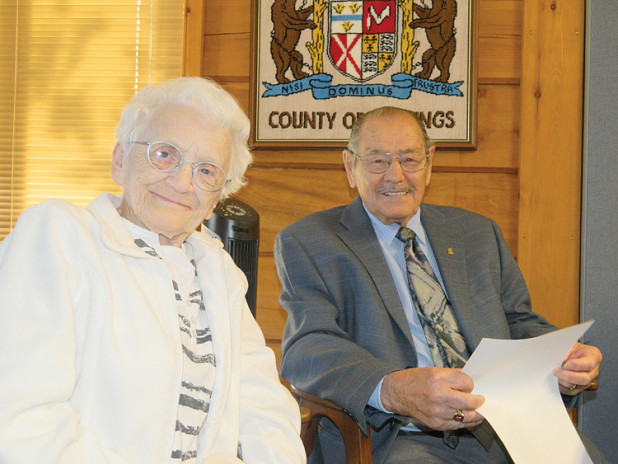Headline News
Soldier remembers Holocaust victims
November 11, 2015

By Jim Eadie
Harold Nash is a quiet unassuming man, and the only living Second World War veteran member of the Royal Canadian Legion Coe Hill. He also was a witness to a story that should never be forgotten.
In May 2014 Nash was celebrated as Citizen of the Year for Wollaston Township, and an article in this paper at the time mentioned his direct involvement in the liberation of the notorious Bergen Belsen concentration camp at the end of the war. As a result, Trent University historian Dr. Mark Celinscak, who was completing a book about the allied forces liberation of Bergen Belsen, got an “archival trace hit” on the story about Nash which led him to another very important and hard to find eyewitness. Celinscak’s book Distance from the Belsen Heap – Allied Forces and the Liberation of a Nazi Concentration Camp was launched on Nov. 3, and is available at any bookseller.
It is difficult to find witnesses, as soldiers sent to Bergen Belsen were pulled individually or in small numbers from numerous companies, and so regimental records often do not provide helpful information. Celinscak was surprised to learn about the number of Canadians involved in liberating the camp, as it was under control of the British army at the end of the war.
“Mr Nash provided important new information,” said Celinscak, “I was completely unaware that Canadian royal engineers were also used at the camp.”
Nash was a Canadian royal engineer posted in France as the war came to an end. He had never heard of death camps or Bergen Belsen, and was growing tired of the daily marching drills on the Parade Square, and anxious to have something to do with his hands.
For those not familiar, in the Canadian armed forces, volunteering can be a risky thing. A drill sergeant might ask if there were any musicians in the group … and considering that could be interesting, two willing volunteers would be taken away only to discover their assignment was to move a piano.
In Nash’s case, he had no idea what he was volunteering for would have life altering consequences for him.
Nash and several young soldiers volunteered to work on an excavation, and were only too happy to escape the marching.
“When we got there, it was the first that we knew. We were asked to bury some bodies,” he said. “Big holes … and the bodies were pushed in. 2,500 here, 3,000 there. I made up little signs with the numbers … how many people buried here, and there. I have a few pictures of the signs I made. We were told they were political prisoners, but mostly Jewish.”
Nash was told that this was also a medical experiment camp where people’s bones were broken, and others were operated on experimentally, sometimes with no anesthetic.
“There were still a few living people there … and they were lying around the site … looked as if they were dumfounded. Stared as if they were in shock … stared you right in the face,” he said.
Nash figured it out later: these were people who were very ill, had lost everything, had no relatives, no home to go back to, and no citizenship anywhere – nothing. Liberation to them was not about cheering happily because they could go home now.
How does Nash deal with those awful memories?
“I think about that place and those people on Remembrance Day”, he said.
Celinscak has a particular research interest in war and culture. His approach is to hear the stories of people involved, their experiences and their subsequent lives. This, combined with rigorous fact checking, makes for compelling reading. He notes that his book was 10 years in the preparation, and unfortunately he “discovered” Nash too late for inclusion in the current book. However, the new information is notated and for now at least, part of archival records for future research.
“I suppose, that is what newspaper articles are for,” he said.
One is never able to find out everything, and so the story never ends.


















